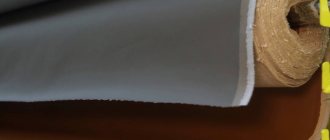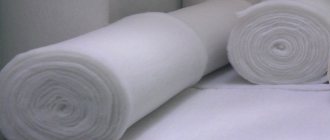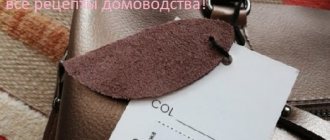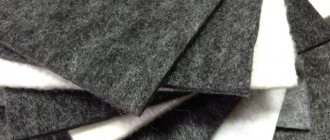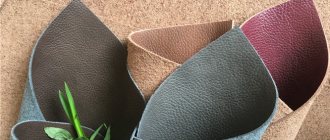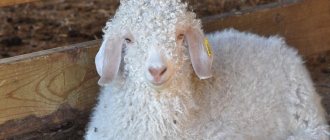Properties of artificial leather
Artificial leather is a safe, durable and reliable material. It is actively used for the production of shoes, accessories, interior items, furniture, clothing and much more. For the production of leatherette, fabric and non-woven bases are used, on which a special polymer layer is applied. Today, myths about the low quality of leather substitutes are long gone. Advanced production technologies make it possible to create wear-resistant and durable materials that cope well with temperatures and aggressive agents. This is a very important quality when it comes to shoe leather.
Basic properties of leatherette
The properties of leather made from polymer materials vary depending on the technology of its production. Modern developments have made it possible to create materials that are resistant to frost and even fire.
General properties of artificial leather:
- hypoallergenic. Leatherette is completely safe for the human body. It does not emit substances that can cause allergies;
- permeability. Modern artificial leather does not cause a greenhouse effect. The latest technologies have made it possible to make it “breathable”. Thanks to this, the material maintains a constant temperature. It does not overheat in the sun and does not harden in cold weather;
- softness. Artificial materials are very pleasant to the touch. They are distinguished by softness and tenderness;
- wear resistance. Leatherette can last for more than one year. If previously leatherette clothes had to be thrown away after a season, now they last for decades;
- nice smell. Innovative manufacturing techniques have eliminated the unpleasant odor from leatherette.
When choosing artificial leather, you also need to pay attention to such a property as density. It differs for different leatherette samples. This indicator determines the strength and scope of use of leatherette.
Eco leather
Eco-leather is, in fact, the same material with polyurethane as described above, but it does not have a middle layer. It is made from cotton fabric and synthetic fiber. The result is a soft, pleasant-to-touch fabric with a breathable surface, which is often used to make shoes and clothing. It is practically indistinguishable from natural leather in appearance and is not afraid of abrasion, low temperature and UV radiation. An important feature of this material is hypoallergenicity, which makes it especially in demand. As you can see from what is written above, there are different types of leather. Thanks to this, you can choose the material that is optimally suitable for solving a particular problem. In order not to make a mistake when choosing, you can contact a specialist who is well versed in the classification of leather and is able to advise an option that suits you in terms of color, texture and performance characteristics, and corresponds to your financial capabilities.
Shoe faux leather
Artificial leather for shoes is a polymer material used to make shoes, boots and boots. There are hard leatherette for the production of backs and soft leatherette for the upper of shoes. The main properties of shoe leather include:
- frost resistance. Artificial leather can withstand temperatures down to -25° C;
- moisture resistance. This property is inherent in soft substitutes used for the production of shoe uppers.
Manufacturers offer a large selection of artificial hard and soft leather. The variety of shades and processing methods (embossing, printing, etc.) allows you to create boots, boots and shoes of original colors and styles.
Artificial leather for welt
Vinyl leatherette - NT for a load-bearing welt, depending on the type of fibrous base, composition and direction of the fiber, is produced in the following grades: V-RN - on a stitched fibrous base made of cotton carded; V-RS - on a fibrous unstitched base made of a mixture of cotton and nylon fibers; V-RVO - on a fibrous unstitched base made of a mixture of synthetic fibers and cotton with a unidirectional arrangement of layers.
Vinyl leatherette - NT for the applied welt is made on a cotton unstitched base of the brands V-RM for men's, V-RZh for women's, V-RD for children's shoes.
Vinyl leather - NT welted - is produced in the form of rectangular plates of different colors.
Upholstery faux leather
Leather is used for furniture upholstery. It is produced by applying a PVC coating to a knitted fabric. Upholstery leatherette can have embossing, patterns and other additional finishing. The material is different:
- high density;
- good wear resistance;
- resistance to deformation;
- moisture resistance;
- bending and tearing strength.
A huge variety of finishing options allows you to use leatherette to create the most unusual pieces of furniture: armchairs, sofas, trestle beds and so on. Leatherette offers designers ample opportunities to realize the most daring ideas. In addition, faux leather furniture is easy to clean from dirt.
Assortment of artificial leathers
Depending on the requirements for product details, artificial and synthetic leathers are made of different structures and with different properties for the upper, lining, heels, toes and welts of shoes.
Artificial and synthetic leathers for shoe uppers. Artificial leather is used for the tops of summer shoes, tops of boots and boots, synthetic leathers are used for the tops of autumn-spring shoes. Of the artificial leathers, the most widely used are various types of vinyl and elastomer leather.
Vinyl leather - T shoe porous-monolithic. Artificial leather has high abrasion resistance, but is not frost-resistant and vapor-permeable enough. It is used for the top of boots used in the autumn-spring period, as well as for the top of light shoes.
Vinyl leather - T shoe varnish. It is used for the manufacture of spring-autumn assortment shoes, operated at temperatures not lower than minus 5°C, as well as for the manufacture of summer shoes. The material has a smooth shiny front surface and low hygienic properties.
Vinyl leather - T shoe suede. Designed for the manufacture of footwear used at temperatures not lower than minus 5°C.
Artificial suede for shoes. Artificial suede is used for the upper of indoor shoes, as well as for finishing parts. It has poor molding properties.
Shargolin. A yuft pattern is embossed on the front side of the shargolin. Used for the tops of boots with a yuft leather top. Vinyl leather - T "Yuftin". A yuft pattern is embossed on the front side. "Yuftin" is used for the tops of insulated boots.
Vinyl leather - TR shoe porous. Designed for the tops of combined women's boots used at temperatures not lower than minus 10°C.
Vinyl urethane leather - T shoe. Available in two thickness groups: 0.9 ±0.1 and 1.3 ±0.1 mm. The material is intended for the upper of a wide range of shoes, operated at temperatures not lower than minus 15°C.
Vinyl leather - NT shoe. The thickness of the material is 0.8-1.2 mm. Designed for parts of the upper of summer open shoes, usually of the strap type.
Shoe tarpaulin. It is a three-layer tarpaulin impregnated with a dispersion of synthetic rubber. Kirza is intended for the tops of boots. It is characterized by high surface density, breaking load and rigidity.
Vorsit. It is a pile fabric (velveton), on which several layers of a gasoline solution of a rubber mixture are applied. Used for the tops of boots with chrome-tanned leather uppers and the uppers of men's boots.
Elastic leather - T shoe suede. It is a tarpaulin with a one-sided porous coating. The material is intended for the upper of winter shoes used at temperatures down to minus 35°C.
The properties of these artificial leathers depend on the type and structure of the coating and the type of base. All these materials are characterized by high strength, low elongation, and low hygienic properties. Due to low hygienic properties, insufficient elongations and, consequently, poor formability and shape stability, artificial leather is used only for parts of the uppers of summer shoes, the tops of boots and boots.
The most commonly used synthetic leathers are SK-8 and Velor (Russia), Polkorfam (Poland), Barex (Czech Republic), Cordley (USA), Porvair (Great Britain), Clarino, GL-50, Toyo Sessina and Patora ( Japan), xile (Germany).
SK-8. Synthetic leather SK-8 is used for the tops of women's boots and the tops of men's low shoes.
Synthetic leather "Velour". It is a needle-punched fibrous base, impregnated with a polyurethane composition, sanded, brushed and wrinkled. The material is light, soft and vapor permeable.
Polcorfam-216. Polkorfam has a smooth pile or varnish surface. Polkorfam is a multilayer material: a non-woven needle-punched base made of polyester fibers impregnated with polyester urethanes, reinforcing fabric, a porous polyurethane layer, a colored polyurethane film and a finishing layer. The material has high strength with low elongation, vapor permeability close to that of leather, low moisture absorption and moisture loss.
Porvair. Unlike other types of synthetic leather, Porvair does not have a fibrous base. It consists of two porous polyurethane films, between which there is no clear boundary. The degree of porosity and dimensions at the edges are different. The absence of a base makes it easier to mold the porvair.
Clarino. Synthetic leathers with a smooth, patent or suede-like surface are supplied under this name. Clarino base fibers are not all impregnated, but only at some points, which makes the material soft and quite vapor-permeable.
Synthetic leather "Toyo sessina". It is a brushed fabric with a thin polyurethane coating.
A common disadvantage of most synthetic leathers is their low hygienic properties.
Haberdashery faux leather
Haberdashery leatherette is used to make various accessories: key holders, wallets, cases, and so on. It is produced by applying PVC to viscose-lavsan, cotton or polyester fabric. Thanks to this, leatherette acquires such properties as:
- softness and tenderness;
- ease of processing;
- resistance to mechanical damage (tensile and bending strength);
- wear resistance.
The service life of a leatherette product depends on the structure of the material. For each accessory, the type of leatherette that is most suitable in terms of performance characteristics is selected. Haberdashery leather also has good frost resistance. This is important for the production of gloves, for example. Therefore, they cope well with temperatures down to -25° C.
Synthetic and artificial leather for shoe uppers.
Artificial materials.
Artificial leather is a soft and thin leather-like material that replaces natural leather for the upper (mainly for boot tops and ankle boots), lining and internal parts of shoes. In most cases, artificial leather has a multilayer structure consisting of a fibrous base (fabric, knitwear, non-woven material), impregnating compounds and finishing coatings that do not have through porosity. The names of artificial leather reflect the type of coating, type of base, purpose and some features of the material.
Type of coating: vinyl – polyvinyl chloride; elasto - rubber; nitro – nitrocellulose; amide – polyamide; urethane - polyester urethane, etc. The type of base is indicated by letters: T - fabric, TR - knitted, NT - non-woven. The words indicate the purpose and properties of leather: shoe leather, frost-resistant, lining, perforated, etc.
However, systematized terminology does not make it possible to distinguish individual materials according to many very significant characteristics of structure, composition and properties. In this regard, a number of materials (tarpaulin, shargolin, etc.) retain the old names, and fundamentally new materials are given new names.
To the most used artificial materials
– substitutes for yufti include: tarpaulin, shargolin, yuftin.
Shoe tarpaulin is a thick, relatively hard artificial material of black color with a large front pattern under cut yuft. It is made from three-layer cotton fabric or cotton-polyester fabric of the same name by impregnation with synthetic rubber dispersions mixed with other materials. The mechanical properties of tarpaulin, determined by the base fabric, are characterized by high tensile strength and low elongation. Impregnation and front coating ensure good water resistance of the tarpaulin and frost resistance, but at the same time it has low vapor permeability. Its wear resistance in boots and boots is approximately 1.5 times lower than the wear resistance of yuft leather.
Shargolin
has as a base a three-layer cotton or cotton-polyester fabric - tarpaulin, on the front side of which a polyvinyl chloride coating with a pattern of cut yuft is applied. In appearance, thickness, water resistance, mechanical and hygienic properties, shargolin is either no different from tarpaulin or is very close to it. Compared to tarpaulin, shargolin has slightly greater softness and better abrasion resistance. The main advantage of shargolin is its resistance to gasoline, but its disadvantage is its low frost resistance compared to tarpaulin. Like tarpaulin, shargolin is intended for boot tops and boot tops.
Yuftin (Vinyl leather-T)
- an artificial material, which is a cloth coated with polyvinyl chloride, with a front pattern like threaded yuft. This material is characterized by increased thickness, low vapor and water permeability, low tensile strength and low elongation. Yuftin, characterized by good heat-protective properties and frost resistance, is mainly used for the manufacture of the tops of insulated yuft boots.
The most commonly used artificial materials - substitutes for chrome leather, include various types of vinyl artificial leather (Viniliskozha-T, Viniliskozha-NT, Viniliskozha-TR, etc.), synthetic leather. Their aesthetic, hygienic, operational and technological properties are subject to higher requirements than artificial materials for the upper parts of yuft shoes.
Vinyl leather
is a whole group of artificial materials on a fabric (Viniliskozha-T), non-woven (Viniliskozha-NT) and knitted (Viniliskozha-TR) basis with a polyvinyl chloride coating. Also, the variety of materials and their properties is achieved due to the different composition and structure of the coating. Vinyl leather is resistant to gasoline, kerosene, water, and mineral oils, but when shoes are worn, its appearance quickly deteriorates. They produce vinyl leather with porous and non-porous films.
Artificial leather used for the manufacture of internal parts must have high sanitary and hygienic properties, incl. vapor and air permeability, as well as being elastic and abrasion resistant. The basis of the range of artificial lining leathers is vinyl artificial leather-T, made on the basis of calico or flannel; elasto-artificial leather-T, consisting of a pile yarn impregnated with synthetic latex (has low sanitary and hygienic properties), etc.
Nitro artificial leather-T shoe (Granitol)
– artificial leather, with a base made of dense fabric (fiber cord, trim), on both sides of which a coating of nitrocellulose with organic additives and mineral fillers is applied. Some types of nitro artificial leather are produced with through perforation to improve hygienic properties. As a rule, it is used for the manufacture of rigid toe caps and heels (see section “Shoe structure”).
Synthetic leather is an artificial material in which polyester urethane is used as a binder and film-forming material to impregnate the fibrous base and create the outer covering. Most types of synthetic leather have a non-woven backing. Synthetic soft leathers are the most suitable for shoe production, since their properties and appearance are close to natural leather, significantly superior to fabric-based artificial materials. Synthetic leather has a multi-layer structure of two, three or more layers; In this case, the obligatory layers are a fibrous base and a polymer coating. The number of layers in some materials is increased due to a thin reinforcing fabric and a thin face film, which is applied during the finishing process and largely determines the appearance of the material - its color, shine, face markings. Reinforcing fabric is an important distinguishing feature of different types of synthetic leather and has a great influence on the mechanical properties of the material, increasing its tensile strength and reducing elongation and softness. It is used for the manufacture of external parts of shoe uppers (as a substitute for chrome leather), as well as some internal parts.
14. Materials for the bottom of shoes. Rubbers.
